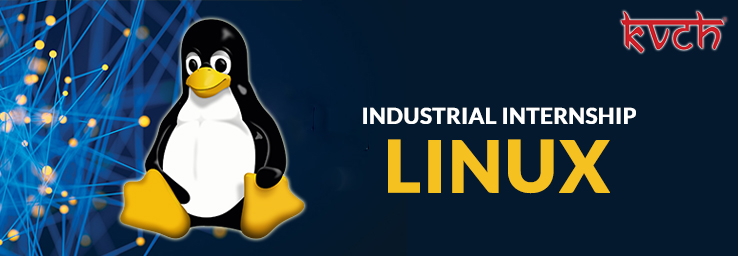
Live Project Based Linux 6 months training in Noida
 4.9
out of 5
based on 9157 ratings.
4.9
out of 5
based on 9157 ratings.
KVCH India program builds a powerful training tool that can be implemented in classrooms as well as in the industry. We offer wide range of programs for Live Project 6 Months Linux Training in Noida under the guidance of the best industrial experts. We are continuously awarded for the past 10 years as the Best 6 months Linux training Institute in Noida.
Six Months Linux Training in Noida includes from basic to advance level modules designed for both students and working professionals.
Globalization has brought up with new opportunities in the market creating a pool of jobs for the graduate students. In order to hold up with the everyday growing demand the universities holds the responsibilities to produce students with excellent skills and experience.
6 Months Based Linux Training Course in Noida is very essential to make student who is pursuing MCA, B.Tech, BCA, BBA, MBA course and they should be aware of the real working environment in industries and to prepare them to handle any kind of obstacles that occur. It is a roadway that allows students to apply their theoretical knowledge practically and opens door to new opportunities. At KVCH, we assure that the performance of each student is up to the standards of the IT industry.
At KVCH once the student opts for 6 months Linux Training they get to experience the real working environment of the IT industry. Our team of expert senior trainers work together to ensure the development of set of skills for each individual. Our experts with hands-on experience on the technology and working experience makes sure to deliver the best to the students while working on LIVE project.
KVCH is the renowned 6 months Linux Training Center in Noida providing world class education to students.
Benefits

Accredited Curriculum

Learn from the Experts

Professional Certificate

Guranteed Career Growth

Placement Assistance

Earn a Valuable Certificate
Course Description
Industrial Training in Linux is a modular 6 months course. The course curriculum of Industrial Training in Linux comprises of
- Introduction to Linux – Ideas & History
- What is Open Source? Linux Origins
- Red Hat Distributions, Linux principles, Linux Usage Basics
- Logging into Red Hat Enterprise Linux
- Starting X from the Console, Accessing the Command Line
- Changing your Password, The root User
- Elevating your Privileges, Editing Text Files
- Running Commands, Getting Help, The whatis Command
- The --help Option, Reading Usage Summaries
- The man and info Commands, Documentation
- Linux File Hierarchy Concepts, Current Working Directory
- File and Directory Names, Absolute and Relative Pathnames
- Changing Directories, Listing Directory Contents
- Copying and Moving Files and Directories
- Creating and Removing Files and Directories, Using Nautilus
- Determining File Content, Viewing Files
- bash Introduction, Heritage, and Features
- Command Line Shortcuts, History Tricks
- Command Line Expansion, Command Editing Tricks
- Standard Input and Output
- Redirecting Standard Input and Output
- Overwriting vs Appending, Redirecting Standard Error
- Redirecting Both Standard Output and Error
- Using Pipes To Connect Processes
- Introducing vim, vim basics, Opening, Modifying & Saving Files
- Using Command Mode, Undoing Changes, Visual Mode
- Splitting the Screen, Configuring vi and vim
- Using bash Variables, Local and Environment Variables
- Configuration and Information Variables, Variable Expansion
- Protecting Against Variable Expansion, Aliases
- How bash Expands the Command Line, Types of Shells
- bash Startup and Exit Scripts, Using Variables in Shell Scripts
- The slocate and find Commands, Basic find Examples
- find and Logical Operators, find and Permissions
- find and Numeric Criteria, find and Access Times
- Executing Commands with find, The Gnome Search Tool
- The Linux Security Model, Users and Groups
- Permission Types
- Changing Permissions Using Nautilus
- User and Group ID Numbers
- The/etc/passwd, /etc/shadow/etc/group files
- System Users and Groups, Changing Your Identity
- User Information Commands
- Special & Default Permissions
- Partitions and Filesystems, Inodes and Directories
- cp, mv, rm, and inodes
- Symbolic (or Soft) Links and Hard Links
- The Seven Fundamental Filetypes, Checking Free Space
- Mounting CDs, DVDs, USB Media, and Floppy Disks
- Why Archive Files? Compressing Archives
- Creating, Inspecting & Extracting File from File Archives
- Why Use File Compression? Compression Utilities
- What is a Process? Process States, Viewing Processes
- Sending Signals to Processes, Terminating Processes
- Altering Process Scheduling Priority
- Interactive Process Management Tools
- Running a Process in the Background, Suspending a Process
- Listing Background and Suspended Jobs
- Compound Commands
- Scheduling a Process To Execute Later
- Scheduling Periodic Processes, Crontab File Format
- Boot Sequence, Boot Loader Components
- GRUB and grub.conf, Kernel Initialization
- init Initialization, Run levels, /etc/rc.d/rc.sysinit
- /etc/rc.d/rc, System V run levels, /Etc/rc.d/rc.local
- Controlling Services
- RPM Package Manager
- Installing and Removing Software
- Updating a Kernel RPM
- RPM Queries, rpm Verification
- About yum, Using yum
- Searching packages/files
- Configuring Additional Repositories
- Creating a Private Repository
- Red Hat Network Server Entitlements
- Red Hat Network Client
- Kernel Modules, Kernel Images & Variants
- Managing the initrd image
- Accessing Drivers through /dev
- Kernel Configuration with /proc
- sysctl: Persistent Kernel Configuration
- Monitoring Processes and Resources
- Network Time Protocol, syslog Configuration
- Xorg Server Configuration, Remote X Sessions
- Virtual Network Computing, SSH: Secure Shell
- System crontab Files, Daily Cron Jobs, CUPS
- Adding a New User Account, User Private Groups
- Group Administration, Modifying/Deleting Accounts
- Password Aging Policies, Switching Accounts, Sudo
- Network Users, Authentication Configuration
- NIS Client Configuration, LDAP Client Configuration
- File Ownership, Linux File Permissions
- SUID / SGID Executables, The Sticky Bit
- The SGID Directories, Default File Permissions
- Access Control Lists (ACLs), SELinux
- SELinux Targeted Policy, SELinux Management
- Filesystem Management, Device Recognition
- Disk Partitioning, Managing Partitions
- Making Filesystem, Filesystem Labels, tune2fs
- Mount Points and /etc/fstab, Mounting Filesystems
- Handling Swap Files and Partitions
- Mounting NFS Filesystems, Automounter
- Advanced Filesystem Management
- Configuring the Quota System
- Software RAID Configuration & Recovery
- Creating & Resizing Logical Volumes
- Archiving tools, tar, dump/restore, rsync
- Network Interfaces, IPv4 Addresses, Device Aliases
- Routing table, Default gateway, Verify IP connectivity
- Defining Local Host Name, Verify DNS Connectivity
- Network Configuration Utilities
- Transparent Dynamic Configuration
- Ipv6: Dynamic & Static Interface Configuration
- New and Modified Utilities
- Boot Media, Accessing Installer, Installation Method
- Configuring File System, Advanced Partitioning
- Starting Kickstart Installation, Kickstart; %pre, %post
- Hardware Considerations, Preparing Domain-0
- Virtual Resources, Domain-U Configuration
- Domain Management with xm
- Activating Domains on boot
- Method of Fault Analysis, Gathering Data
- Order of the Boot Process
- Filesystem Corruption & Recovery
- Recovery Run-levels, Rescue Environment
- Concepts and Practices, System Faults and Breaches
- Method of Fault Analysis, Benefit of System Monitoring
- Managing Processes by Account
- Service and Network Access Controls
- System Initialization and Service Management
- Service and Application Access Controls
- tcp_wrappers Configuration
- Internet Protocol and Routing
- IPv6: Dynamic & IPv6: Static Interface Configuration
- IPv6: Routing Configuration, Netfilter Overview
- Rules: General Considerations, Connection Tracking
- Network Address Translation (NAT), IPv6 and ip6tables
- Host Name Resolution, DNS-Specific Resolvers
- Trace a DNS Query with dig, Exploring DNS with host
- Service Profile: DNS, Getting Started with BIND
- bindchroot Package, cachingnameserver Package
- Remote Name Daemon Control (rndc)
- The DHCP Service, DHCP Overview
- Configuring an IPv4 DHCP Server
- File Transfer Protocol (FTP), Network File Service (NFS)
- Port options for the Firewall
- Samba services, Configuring Samba
- Apache Overview
- Apache Server Configuration, Virtual Hosts
- Apache Access Configuration, CGI
- Apache Encrypted Web Server
- Squid Web Proxy Cache
- Essential Email Operation
- Simple Mail Transport Protocol
- Sendmail SMTP Restrictions
- Sendmail Operation
- The Need For Encryption
- Symmetric Encryption
- Asymmetric Encryption
- Public Key Infrastructures
- Digital Certificates
- Account Management
- Account Information (Name Service)
- Name Service Switch (NSS)
- Pluggable Authentication Modules (PAM)
- PAM Operation, Utilities and Authentication
 +1.844.44.55.767
+1.844.44.55.767  +91.9510.860.860
+91.9510.860.860
